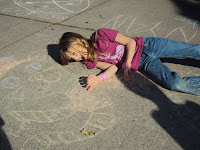 "The Old Oaken Bucket"
"The Old Oaken Bucket"
"Bringing in the Maple Sugar"


 "The Old Oaken Bucket"
"The Old Oaken Bucket"


 Southern (Tunisian) Gardens
Southern (Tunisian) Gardens Fish Magic
Fish Magic





Georges Seurat was a neo-impressionist. His technique for portraying the play of light using tiny brushstrokes of contrasting colours became known as Pointillism. He created huge compositions with tiny, detached strokes of pure colour too small to be distinguished when looking at the entire work but making his paintings shimmer with brilliance. Seurat began to" draw at an early age. In 1875, he took a course with sculptor Justin Lequien. Several years later, Seurat enrolled at the Ecole des Beaux-Arts and studied with Henri Lehmann. Seurat remained at the school for two years, during which time he discovered a book entitled Essai sur les signes inconditionnels de l'art (Essay on the Unmistakable Signs of Art) by Humbert de Superville. This discovery of the relationship between lines and images became the inspiration for Seurat's entire career. When his painting "Une Baignade, Asnieres" was refused by the Salon jury he began exhibiting with the foundation of the Groupe des Artistes Independants, who promoted the development of modern art. One of his most famous works is "Sunday Afternoon on the Island of La Grande Jatte (1884-1886):





